
An atmospheric river will wind down through today across California with lingering heavy rainfall, heavy mountain snow, and gusty winds. A wintry mix of freezing rain, sleet, and snow will cause hazardous travel conditions for the Great Lakes into the northern Mid-Atlantic and southern New England today through Saturday morning. Areas of tree damage and power outages are possible. Read More >
This Spring Flood and Water Resources Outlook is for the Quad Cities Hydrologic Service Area (HSA), which covers portions of eastern Iowa, northwest and west central Illinois, and extreme northeast Missouri. This includes the Mississippi River from above Dubuque, Iowa to below Gregory Landing, Missouri and its tributaries. The primary tributary river basins include the Maquoketa, Wapsipinicon, Cedar, Iowa, Skunk, and Des Moines Rivers in Iowa, the Fox River in Missouri, and the Pecatonica, Rock, Green, and La Moine Rivers in Illinois.
Probabalistic Hydrologic Outlook
Use the links below to find the Graphical Probabilities and the Numerical Probabilities respectively.
Flood Outlook Summary
The risk for flooding this spring, beyond the middle of March, is above normal for the Mississippi River, near to above normal for rivers in Illinois, and near normal for rivers in Iowa and Missouri.
Main Points:NOTE: A heightened risk for flooding is not an indicator of severity. The highest probabilities this season are for minor flooding.
Current and Forecast River Conditions - Advanced Hydrologic Prediction Service (AHPS)
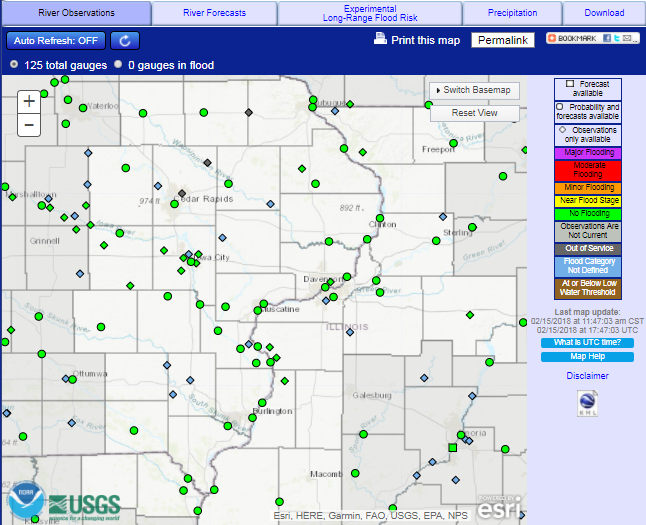 |
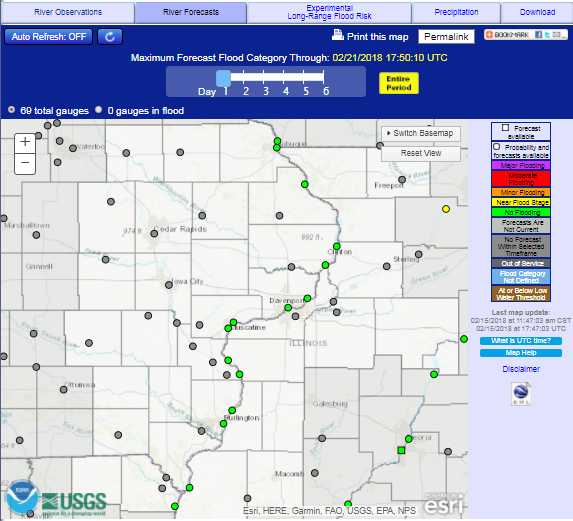 |
|
| Observed Conditions | Forecast Conditions | Long-Range Outlooks |
Flood Category definitions:
Many factors are considered when determining the overall flood risk for the season, with the combination of these influences factoring into the final determination. These factors are discussed in detail below.
Seasonal Precipitation
After well above normal precipitation during the second part of February, total precipitation for the winter season averages out at near normal amounts. The wettest conditions occurred over Illinois, with amounts in February totaling 3 to 5 inches. Lower amounts were observed over the Iowa and Missouri portions of the area.
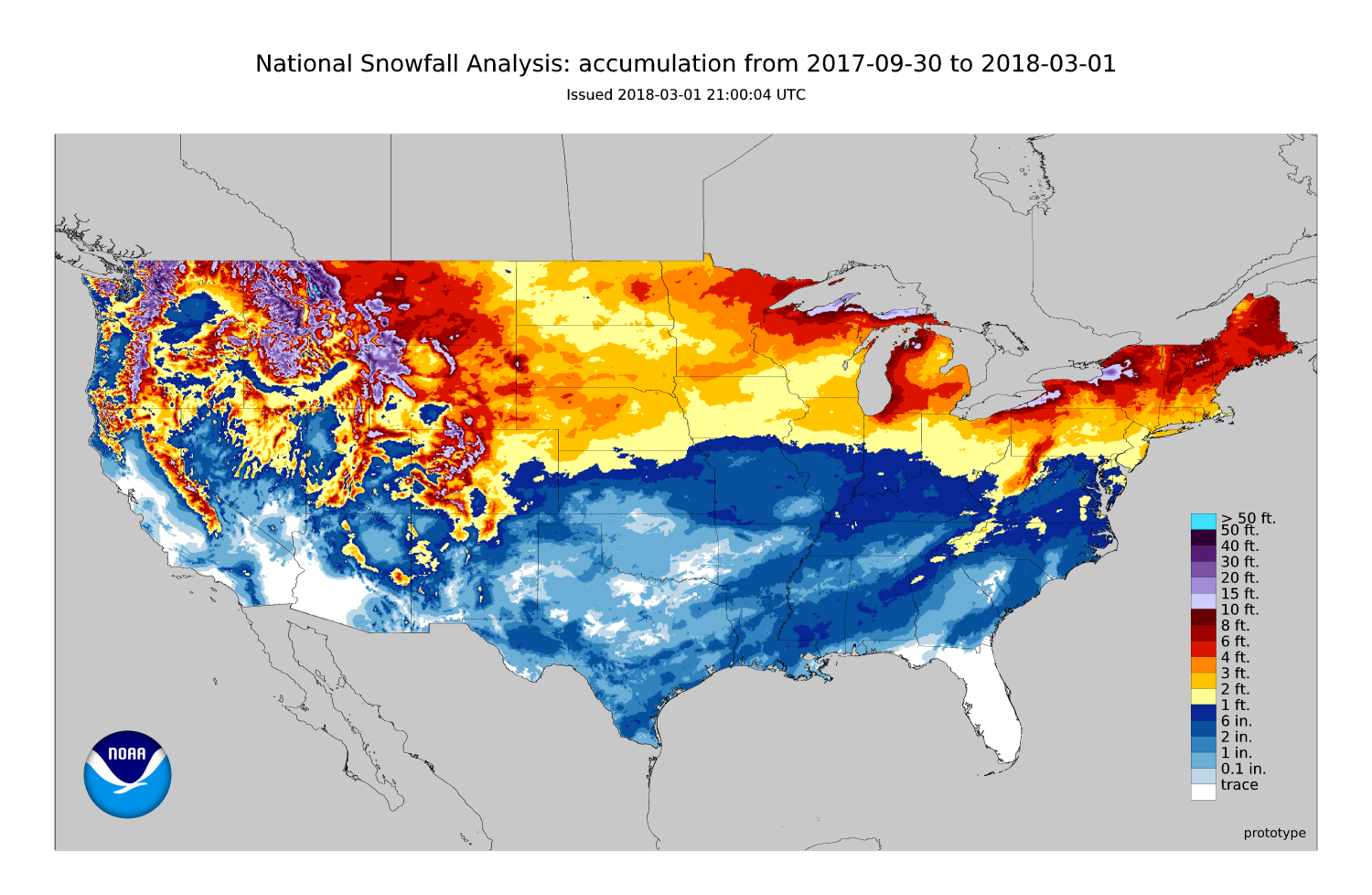 |
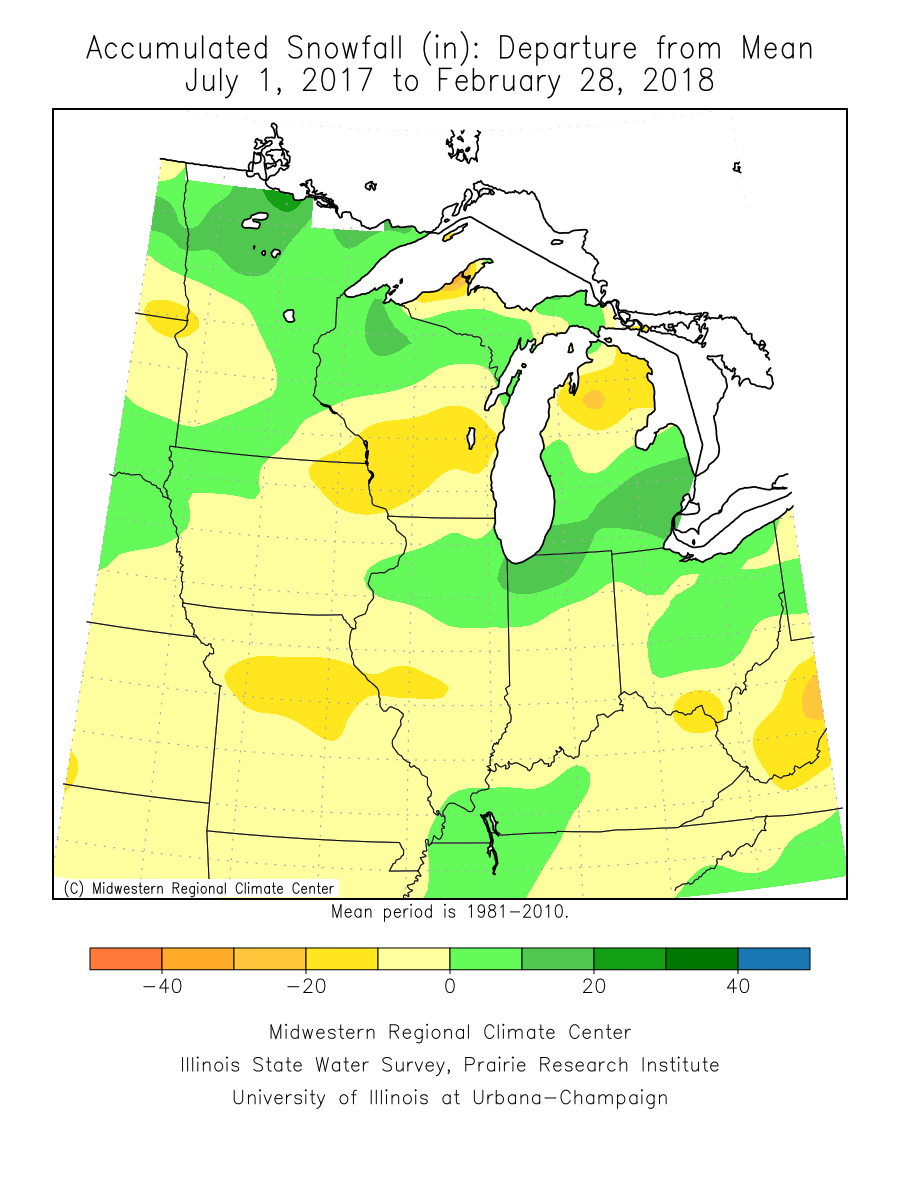 |
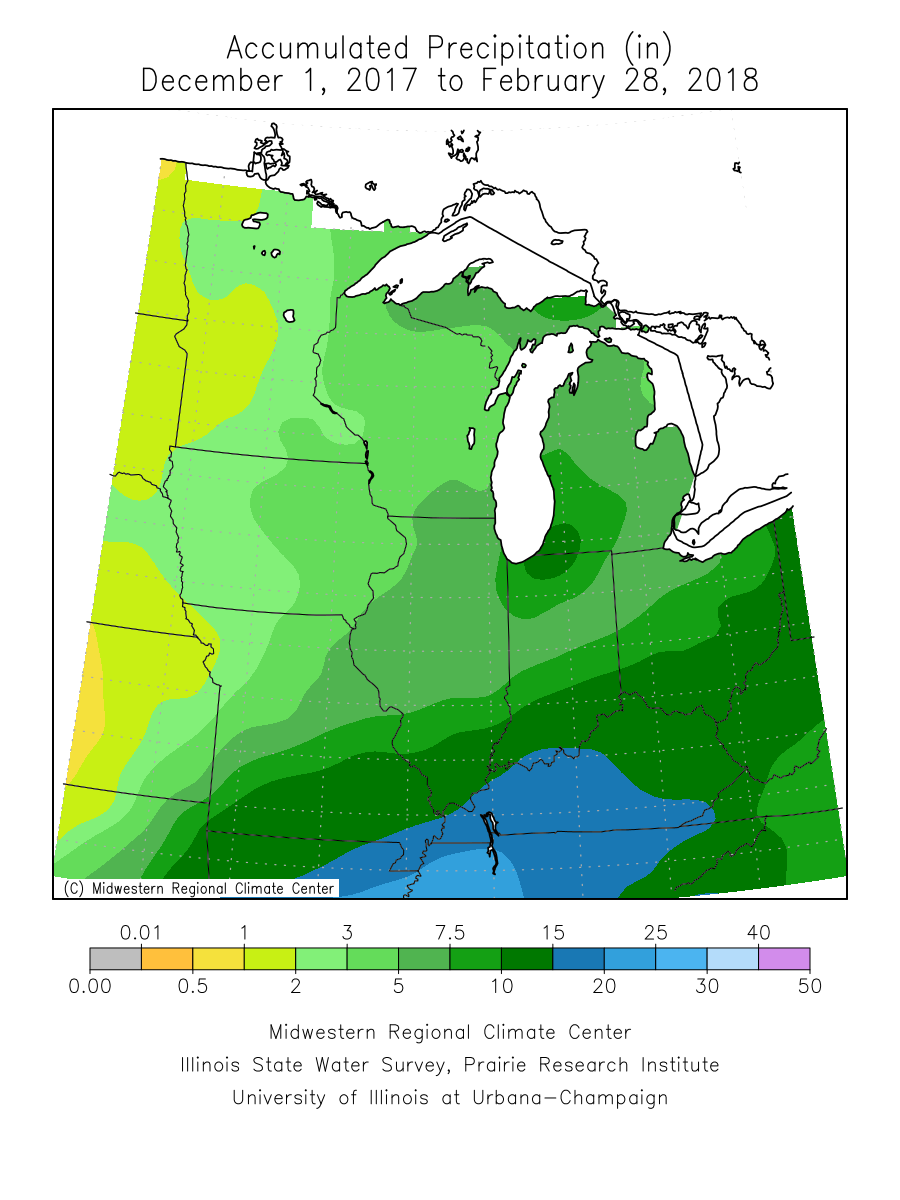 |
 |
Current Streamflow
Streamflows are running at near to above normal levels. This leads to a higher chance for flooding as lesser amounts of runoff are needed to rise the rivers to flood stage.
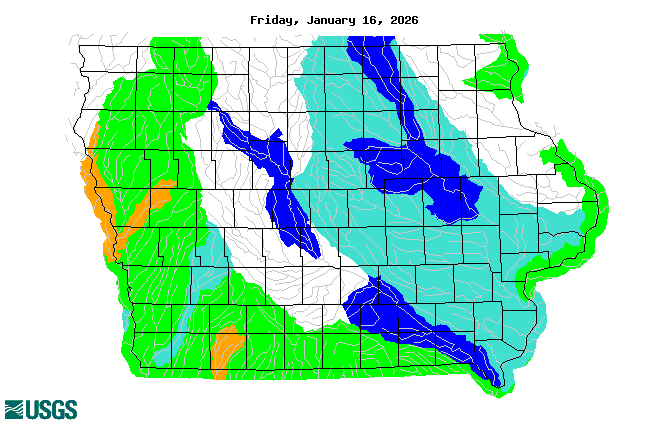 |
 |
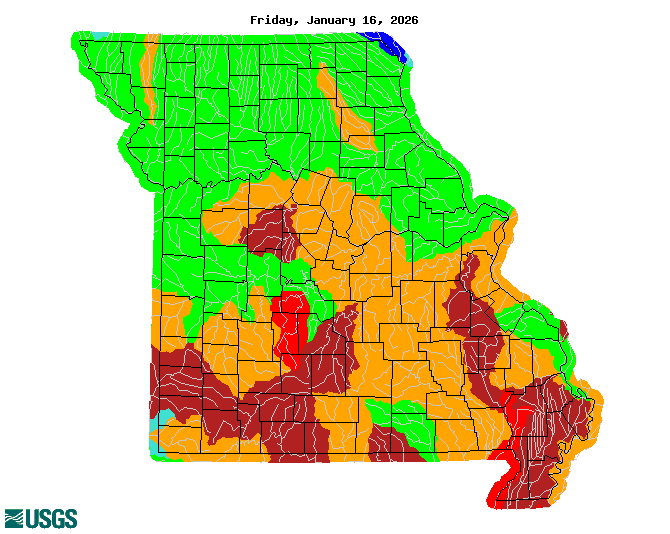 |
| Iowa | Illinois | Missouri |
| Images courtesy of the USGS |
Soil Conditions
After the ground thawed the last week of February, ponded water soaked into the ground. This has allowed moistening of the soils. Across Iowa and Missouri, where the soils are less saturated, more water can be absorbed leading to lowered chances for flooding when compared to locations in Illinois, where soils are more saturated.
| Image courtesy of the NWS Climate Prediction Center |
Snow Cover and Liquid Water Content
Snow fell across the northern parts of the Upper Mississippi River basin, which added to the winter snowpack. The snow cover resides north of a line from far north central Iowa to the Green Bay, WI area. Liquid water content in the snowpack is measuring at 1 to 4 inches, with some localized areas of 4 to 6 inches in northern Wisconsin.
|
|
||
|
||
| Images courtesy of the National Operational Hydrologic Remote Sensing Center (NOHRSC) |
Frost Depth
The ground has thawed across much of the local area, which will lower flooding potential on area rivers given unsaturated soils. However, the upper portions of the Mississippi River basin remain frozen to depths of 1 to 4 feet. Conditions that would cause higher chances for flooding on the Mississippi river would be a quick melt of the snowpack, heavy rain, or a combination of heavy rain and a melting snowpack, as frozen ground will contribute to escalated runoff amounts.
| Frost Depths - North Central River Forecast Center | |||
|
Ice Jam Flooding
River ice has lessened considerably through the end of February due to the warm temperatures as well as high streamflows pushing ice out of the rivers. Going through March, warming temperatures will lead to the continued melting of river ice, which will lower the chances for ice jams and subsequent flooding. However, any rivers that still have ice cover will still be vulnerable to ice jam flooding.
Drought
According to the U.S. Drought Monitor, Abnormally Dry (D0) and Moderate Drought (D1) conditions are ongoing from Missouri into southeast Iowa. conditions have improved because of the rainfall the end of February.
| Image courtesy of the US Drought Monitor |
Precipitation and Temperature Outlooks
The following are weather outlooks for 8-14 day time period and for the March, April, May period.
| 8 to 14 day Temperature Outlook | 8 to 14 day Precipitation Outlook |
 |
 |
|
Three Month Temperature Outlook |
Three Month Precipitation Outlook |
 |
 |
River and streamflow information:
Flood safety and flood insurance information:
Precipitation, temperature, and soil moisture information:
Questions or Comments
If you have questions or comments about this spring flood and water resource outlook please contact:
Jessica Brooks
Service Hydrologist
National Weather Service
9050 Harrison St
Davenport, IA 52806
563-391-7094 ext 493
Email: jessica.brooks@noaa.gov